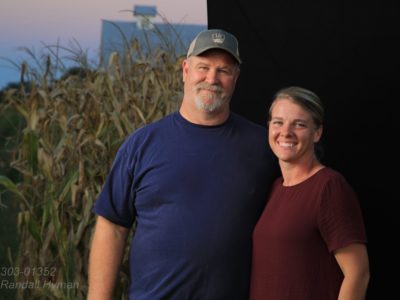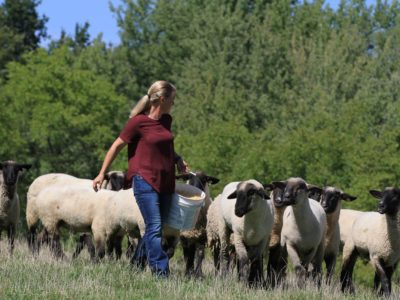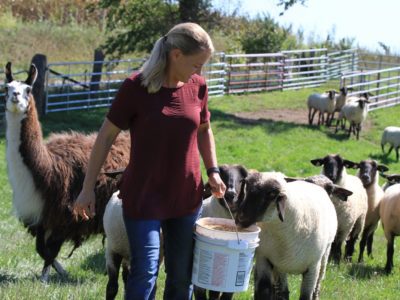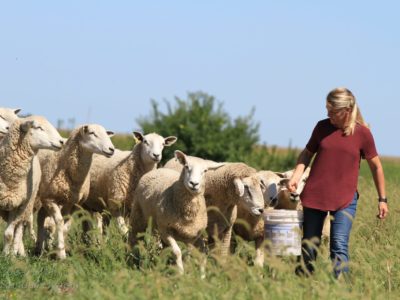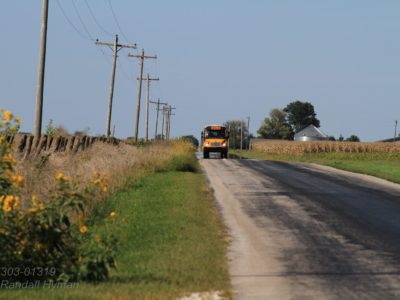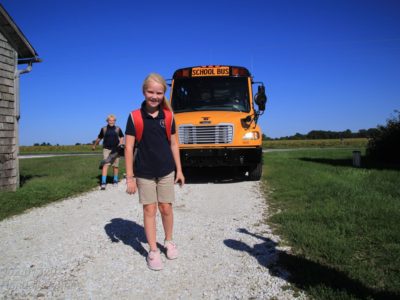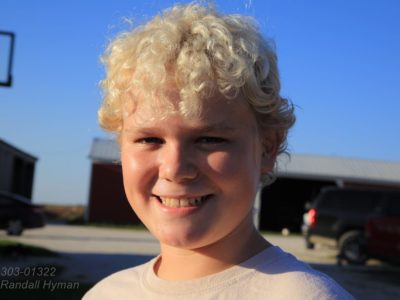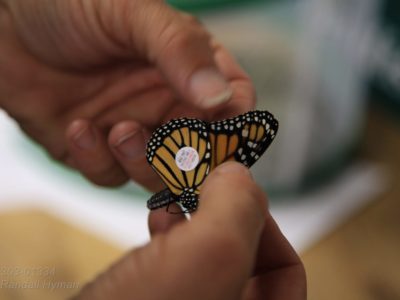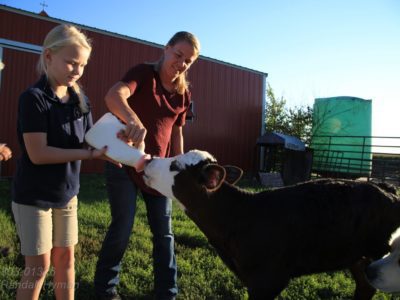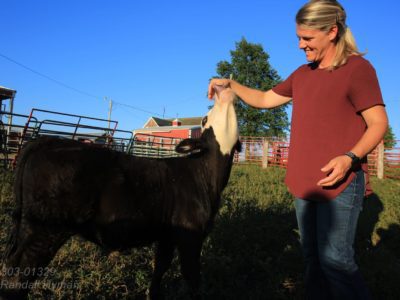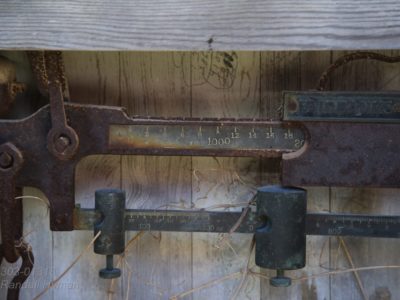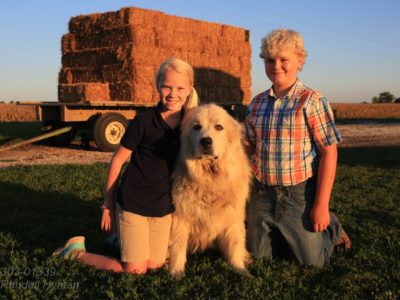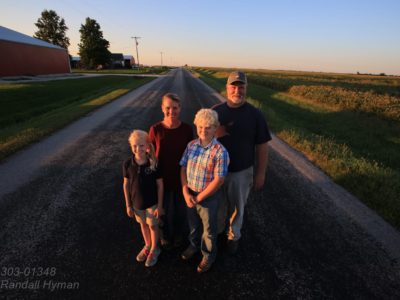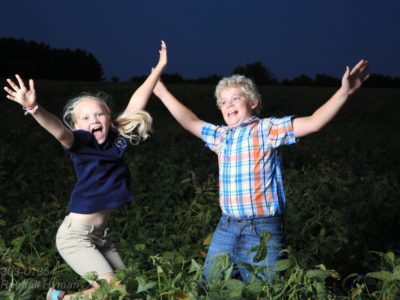A visit to the Corzatt farm in west central Illinois is a perfect introduction to the typical mid-sized, Midwestern family farm in the United States. With 600 acres in soybeans and another 600 in corn, the Corzatts also grow 35 acres of wheat and 95 acres of hay. Throw in 140 mixed-breed beef cattle and several dozen prize-winning show sheep, and you’ve got the picture. Oh, and the farm itself has been in the family for nearly a century.
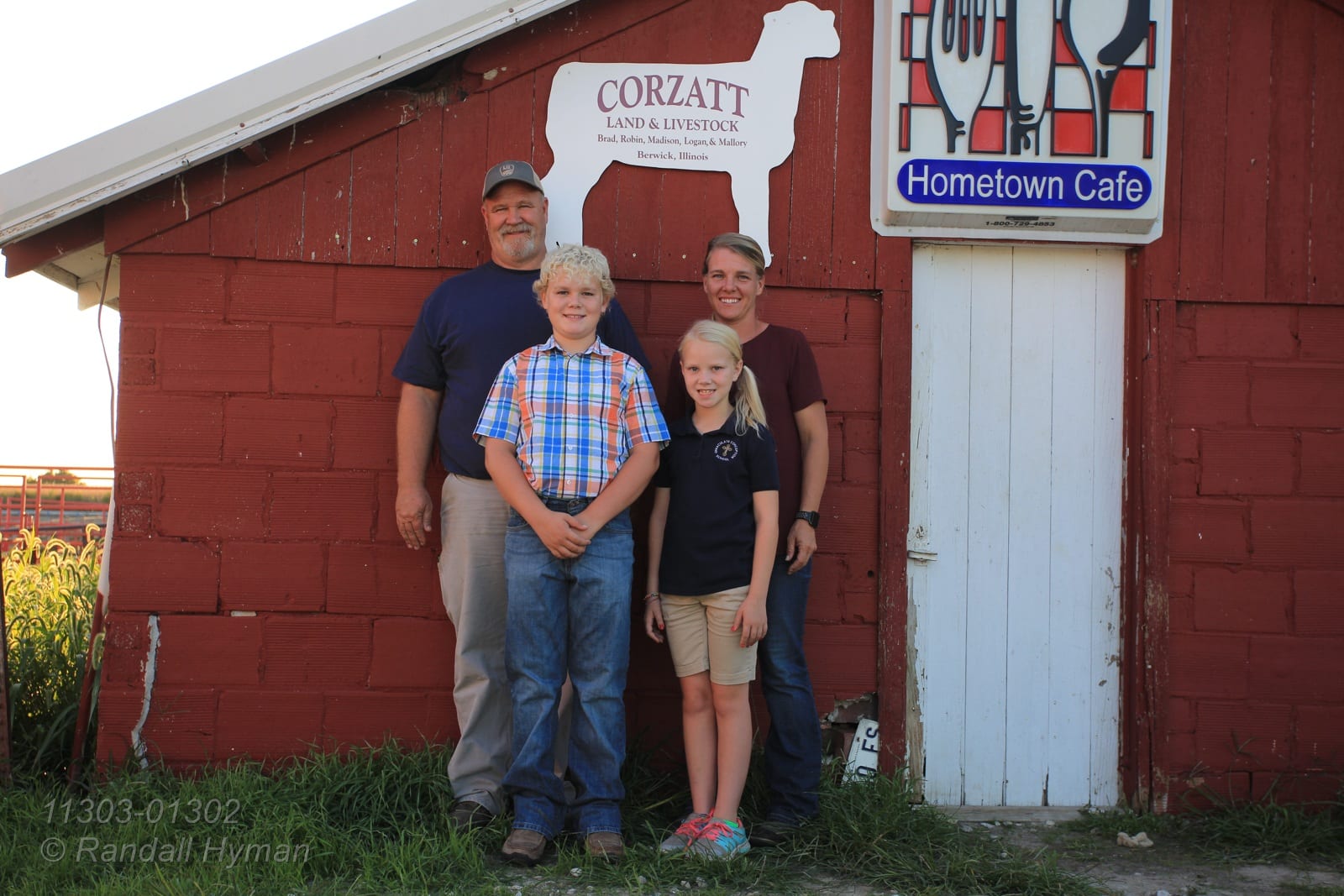
For all that, though, it’s clear that what really makes life tick here is the love the Corzatts have for farming, and, through that, their bond with each other, their land and their animals.
“My wife does everything I do.” says Brad Corzatt, a mountain of a man with a big heart to match his gentle nature.
“We’re out there together every day, side by side,” he adds. “She loves farming like I do.”
His wife, Robin, is as tough as Brad is big. She hails from a dairy farm in Maryland at the upper tip of Chesapeake Bay. After suburban sprawl swallowed her parents’ farm, she became involved in showing sheep. She also decided it was time to move on, which is how she met Brad at a show in Illinois.
“I was ready to find something different,” Robin says. “It’s more relaxed and laid back here.”
- Robin Corzatt feeds prize show sheep in pasture on her farm near Berwick, Illinois.
- Robin Corzatt pets prize show sheep, Cookies and Cream, on her farm near Berwick, Illinois.
- Farm couple Brad and Robin Corzatt pose in cornfield near Berwick, Illinois.
The Corzatts’ typical day starts at six in the morning with a hearty breakfast before the yellow school bus fetches 12-year-old Logan and 9-year-old Mallory for school. Brad is soon off to tend cattle while Robin handles the flocks of sheep that graze in different pastures separated by breed. I spot a llama, strategically planted among one remote flock to protect the sheep from coyotes.
- Robin Corzatt feeds prize show sheep in pasture on her farm near Berwick, Illinois.
- Robin Corzatt feeds prize show sheep in pasture on her farm near Berwick, Illinois.
- Robin Corzatt feeds prize show sheep in pasture on her farm near Berwick, Illinois.
- Robin Corzatt feeds prize show sheep in pasture on her farm near Berwick, Illinois.
- Robin Corzatt feeds prize show sheep in pasture on her farm near Berwick, Illinois.
- Robin Corzatt feeds prize show sheep in pasture on her farm near Berwick, Illinois.
- Guard llama stands in sheep pasture on the Corzatt farm; Berwick, Illinois.
- Robin Corzatt feeds prize show sheep in pasture on her farm near Berwick, Illinois.
- Robin Corzatt feeds prize show sheep in pasture on her farm near Berwick, Illinois.
“Llamas are naturally curious,” Robin explains, “and their first instinct is to walk towards things instead of run. That scares the coyotes.”
After checking pastures and pouring buckets of ground corn and feed pellets into field troughs (“just to keep them fat and sassy”) Robin’s morning chores are nearly done.
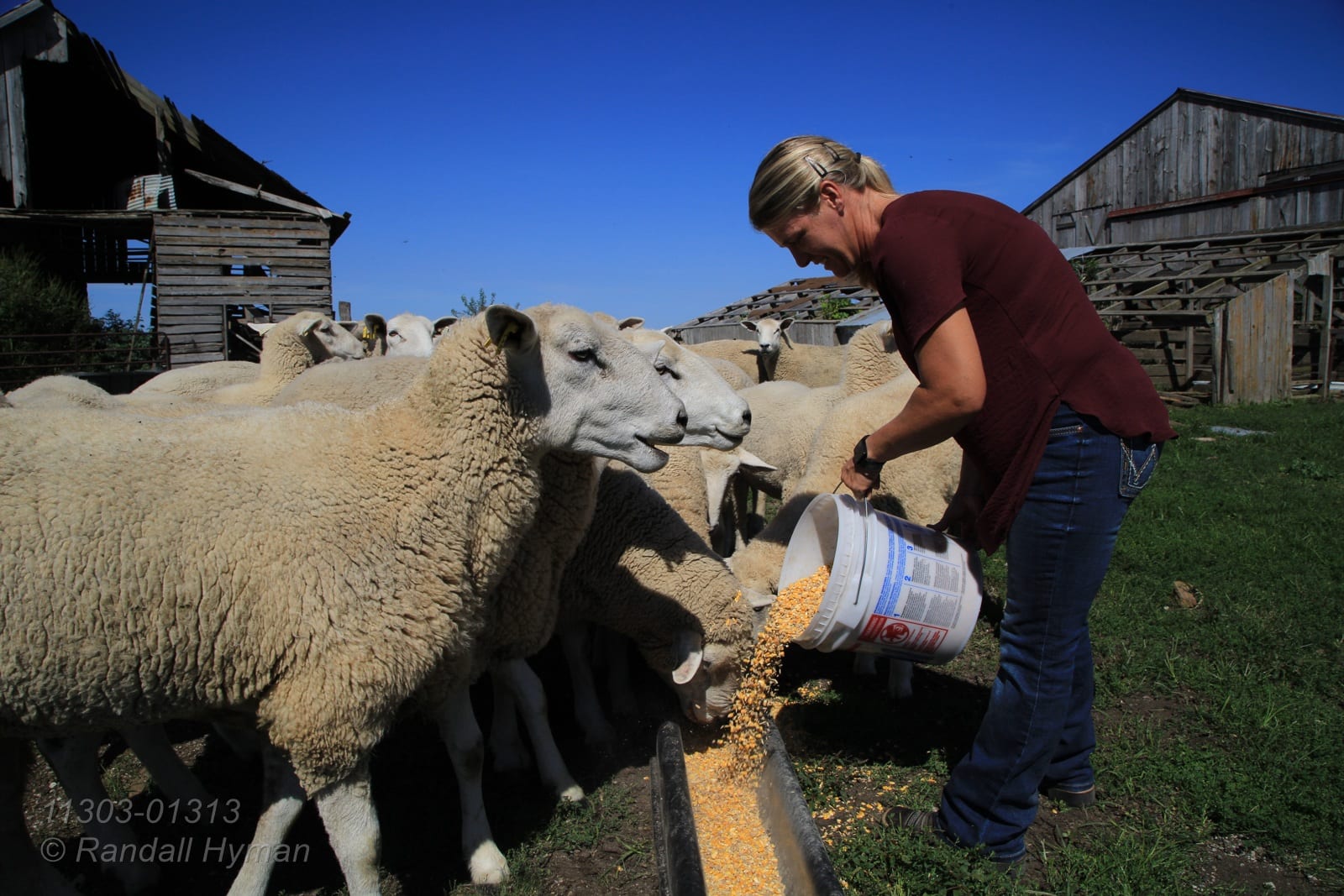
Brad is busy with cattle (it’s calving season), fence mending, and the like. With harvest time around the corner, Brad will soon be spending his days combining their corn and soybeans.
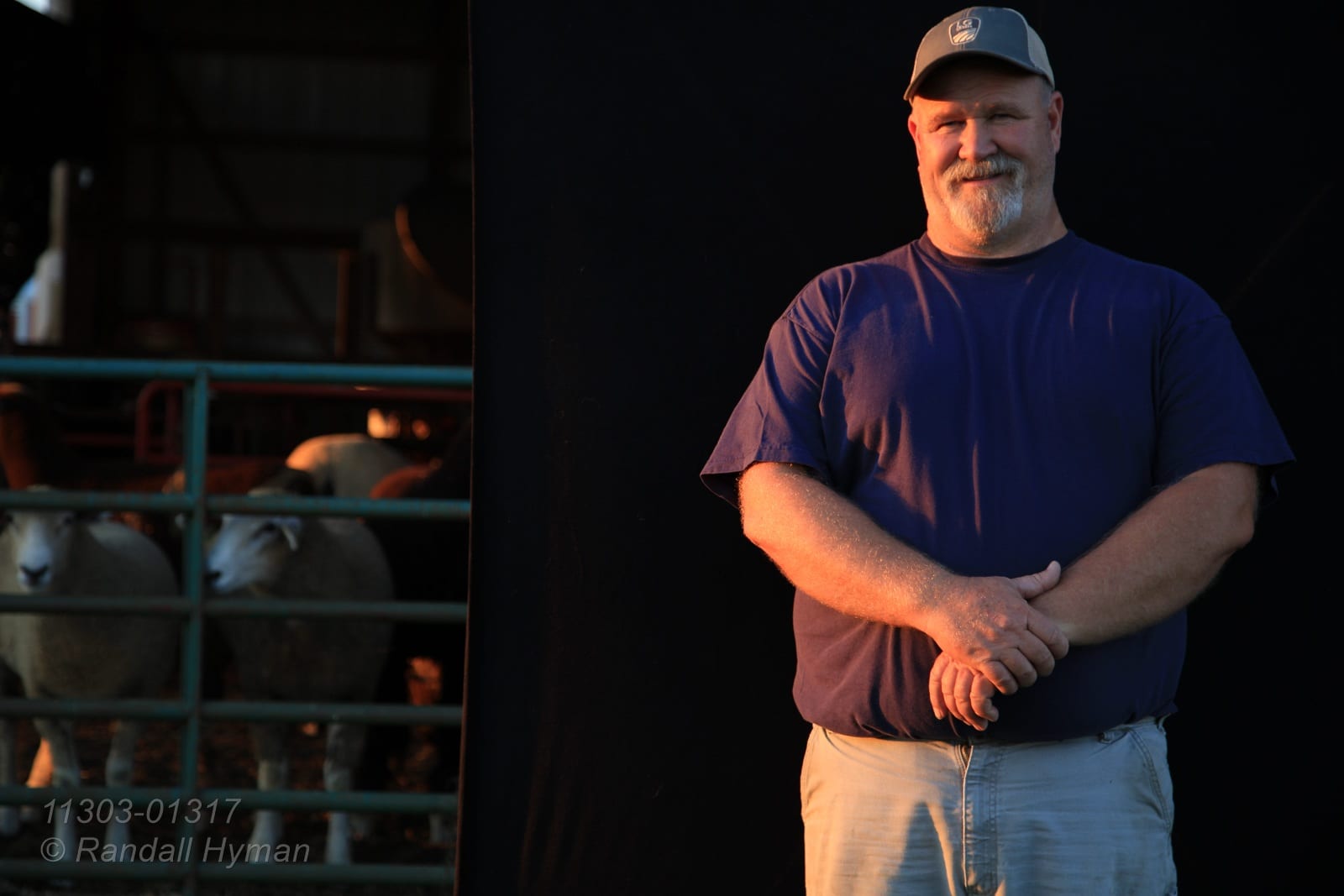
“We didn’t start raising [soy]beans till the [19]70s,” he says, “and then we were getting just 40 bushels an acre. Last year, our top fields were hitting 82.”
Despite depressed prices on both soybeans and corn, Brad has seen worse calamity. A 1995 tornado hit his parents’ house, and in 1999 a fire destroyed most of his barns and sheds, sparing the house.
“My father was like a rock,” he remembers. “While everyone was running around crazy, he took care of things.”
Before long, it’s time for the yellow school bus to return in mid-afternoon, rolling down the long, narrow asphalt road that leads 12 miles from the town of Monmouth to the Corzatt farm. Mallory and Logan come bounding off with a mission. They head straight to the shed where monarch chrysalises abound in two nylon net enclosures. A couple of wet, newly emerged butterflies hang drying.
- Yellow school bus approaches Corzatt farm near Berwick, Illinois.
- Mallory Corzatt (9) and brother Logan (12) arrive home on yellow school bus at family farm near Berwick, Illinois.
- Mallory Corzatt (age 9) on her family farm near Berwick, Illinois.
- Logan Corzatt (age 12) on his family farm near Berwick, Illinois.
- Robin Corzatt tags newly-emerged monarch butterfly on her farm near Berwick, Illinois.
- Robin Corzatt poses with daughter Mallory (age 9) and son Logan (age 12) in barnyard on their farm near Berwick, Illinois.
- Robin Corzatt tags newly-emerged monarch butterfly on her farm near Berwick, Illinois.
- Robin Corzatt and son Logan (age 12) release newly-tagged monarch butterfly on their farm as father Brad looks on; Berwick, Illinois.
- Mallory Corzatt (age 9) releases newly-tagged monarch butterfly on her farm; Berwick, Illinois.
- Mallory Corzatt (age 9) admires newly-emerged monarch butterfly on her farm; Berwick, Illinois.
It’s been one of the children’s favorite projects this summer, watching plump caterpillars with distinctive black, yellow and white bands hang upside down to transform into chrysalises, soon to emerge as orange and black butterflies.
Robin helps them tag one butterfly before Mallory takes it outside and releases it. While it probably won’t help pollinate many crops, the jury is still out as to whether self-pollinating soybeans might benefit from a little extra help. Some Iowa State University studies over the past ten years suggest a possible yield increase where honeybees are abundant.
We watch the monarch take off and it settles on a nearby flower, still a bit wet. Then it’s time for chores. The children feed hay to the sheep and bottle-feed orphan calves in the barnyard before heading inside for homework.
- Logan Corzatt feeds hay to prize show sheep on his family’s farm; Berwick, Illinois.
- Prize show sheep on Corzatt farm near Berwick, Illinois.
- Robin Corzatt herds young calves on her farm near Berwick, Illinois.
- Robin Corzatt pets young calf in barn on her farm near Berwick, Illinois.
- Robin Corzatt pets young calf in barn on her farm near Berwick, Illinois.
- Mallory Corzatt (age 9) and her mother Robin bottle feed young calf at family farm near Berwick, Illinois.
- Mallory Corzatt (age 9) and her brother Logan (age 12) bottle feed young calf at family farm near Berwick, Illinois.
- Robin Corzatt plays with young calf in barnyard on her farm near Berwick, Illinois.
- Robin Corzatt plays with young calf in barnyard on her farm near Berwick, Illinois.
- Brad, Robin and daughter Mallory Corzatt admire young calf in barnyard on their farm near Berwick, Illinois.
- Brad, Robin and daughter Mallory Corzatt admire young calf in barnyard on their farm near Berwick, Illinois.
- Vintage truck scale in old barn on the Corzatt farm near Berwick, Illinois.
“There’s no better place to raise kids,” Robin says, pointing out that farms teach children lessons about life from birth to death. “They each have chores, too, and they have to do them to our standards. With sheep, too little food means low nutrition and too much means gut problems. It teaches them responsibility.”
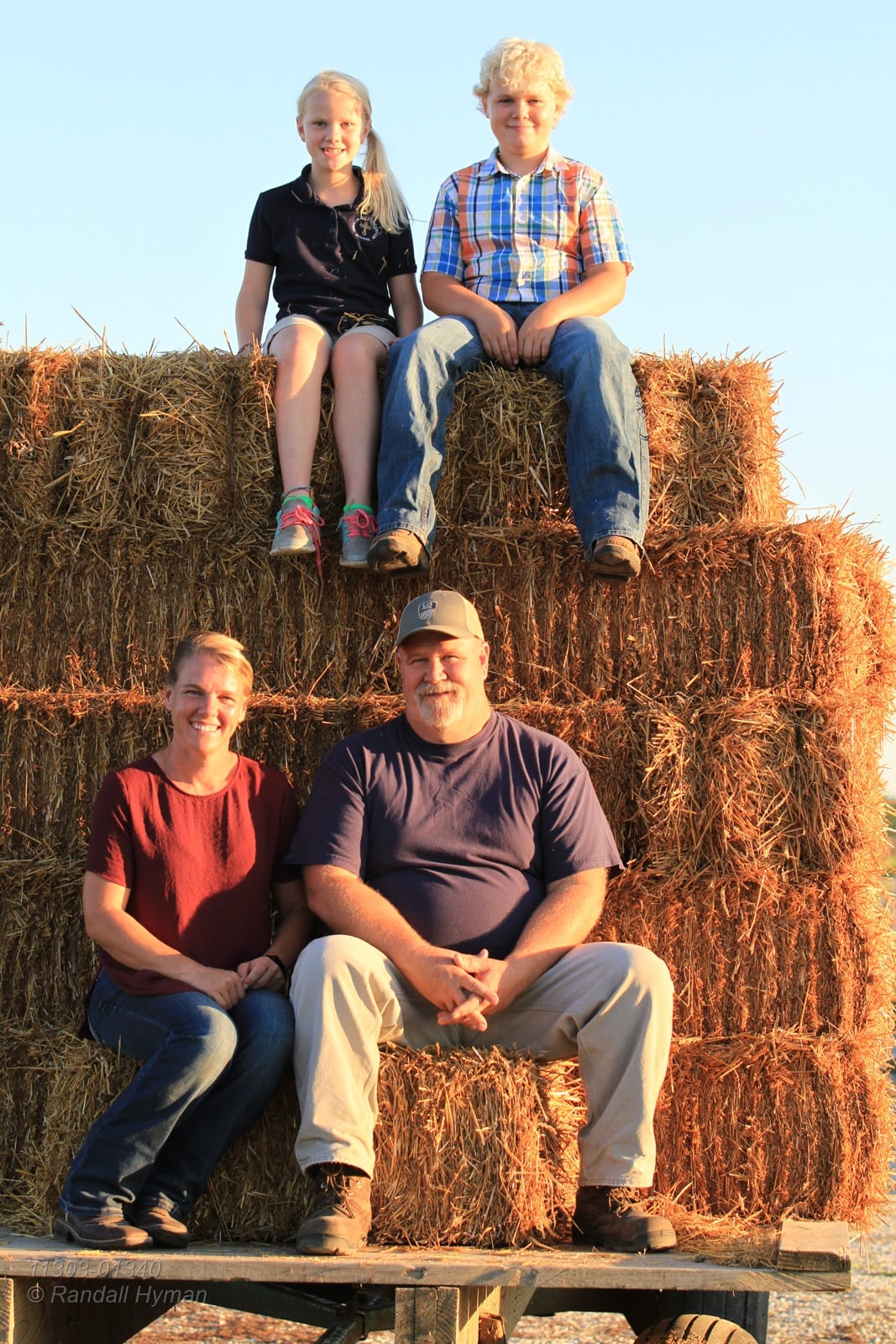
After dinner, the Corzatts show me around the barns and nearby fields. The sun is setting, and, while I photograph their parents in the soybean field across the road, the kids jump amid the bean plants like popcorn, full of youthful energy and play. It’s getting late, though, and soon time for bed.
- Mallory Corzatt (9) and brother Logan (12) pose near hay wagon with dog Boomer, a Pyrenean shepherd; Berwick, Illinois.
- Mallory Corzatt (9) and brother Logan (12) pose near hay wagon with dog Boomer, a Pyrenean shepherd; Berwick, Illinois.
- Mallory Corzatt (9) and brother Logan (12) sit atop hay bales on their family farm; Berwick, Illinois.
- Mallory Corzatt (9) and brother Logan (12) sit atop hay bales on their family farm; Berwick, Illinois.
- Brad Corzatt helps daughter Mallory off top of hay wagon while her brother Logan jumps down on their farm; Berwick, Illinois.
- Brad Corzatt helps daughter Mallory off top of hay wagon on their farm; Berwick, Illinois.
- Corzatt family poses outside barn at sunset (parents Brad and Robin, children Logan and Mallory) on their farm where they raise cattle, soybeans, corn and show sheep; Berwick, Illinois.
- Corzatt family poses on empty road at sunset (parents Brad and Robin, children Mallory and Logan) on their farm where they raise cattle, soybeans, corn and show sheep; Berwick, Illinois.
- Corzatt family poses on empty road at sunset (parents Brad and Robin, children Logan and Mallory) on their farm where they raise cattle, soybeans, corn and show sheep; Berwick, Illinois.
- Corzatt family poses in soybean field at sunset (parents Brad and Robin, children Logan and Mallory) on their farm where they raise cattle, soybeans, corn and show sheep; Berwick, Illinois.
- Corzatt family poses in soybean field at sunset (parents Brad and Robin, children Logan and Mallory) on their farm where they raise cattle, soybeans, corn and show sheep; Berwick, Illinois.
- Farm couple Brad and Robin Corzatt pose in cornfield near Berwick, Illinois.
- Mallory and Logan Corzatt, siblings, pose in soybean field near Berwick, Illinois.
- Mallory and Logan Corzatt, siblings, play in soybean field near Berwick, Illinois.
- Corzatt family poses with photo lights and black cloth background in soybean field (parents Brad and Robin, children Mallory and Logan) on farm where they raise cattle, soybeans, corn and show sheep; Berwick, Illinois.
- Sunset silhouettes tiller implement on Corzatt farm near Berwick, Illinois.
- Sunset silhouettes tiller implement on Corzatt farm near Berwick, Illinois.
After the kids are tucked in, Robin, Brad and I talk about our lives and work. I mention that journalism involves a lot of travel, but I envy the life they have here on the farm. When they come outside to see me off, the sky is ablaze with stars. The Milky Way cuts a gauzy white stripe from south to northwest, with Mars, Jupiter and Venus burning bright. We are all three in awe.
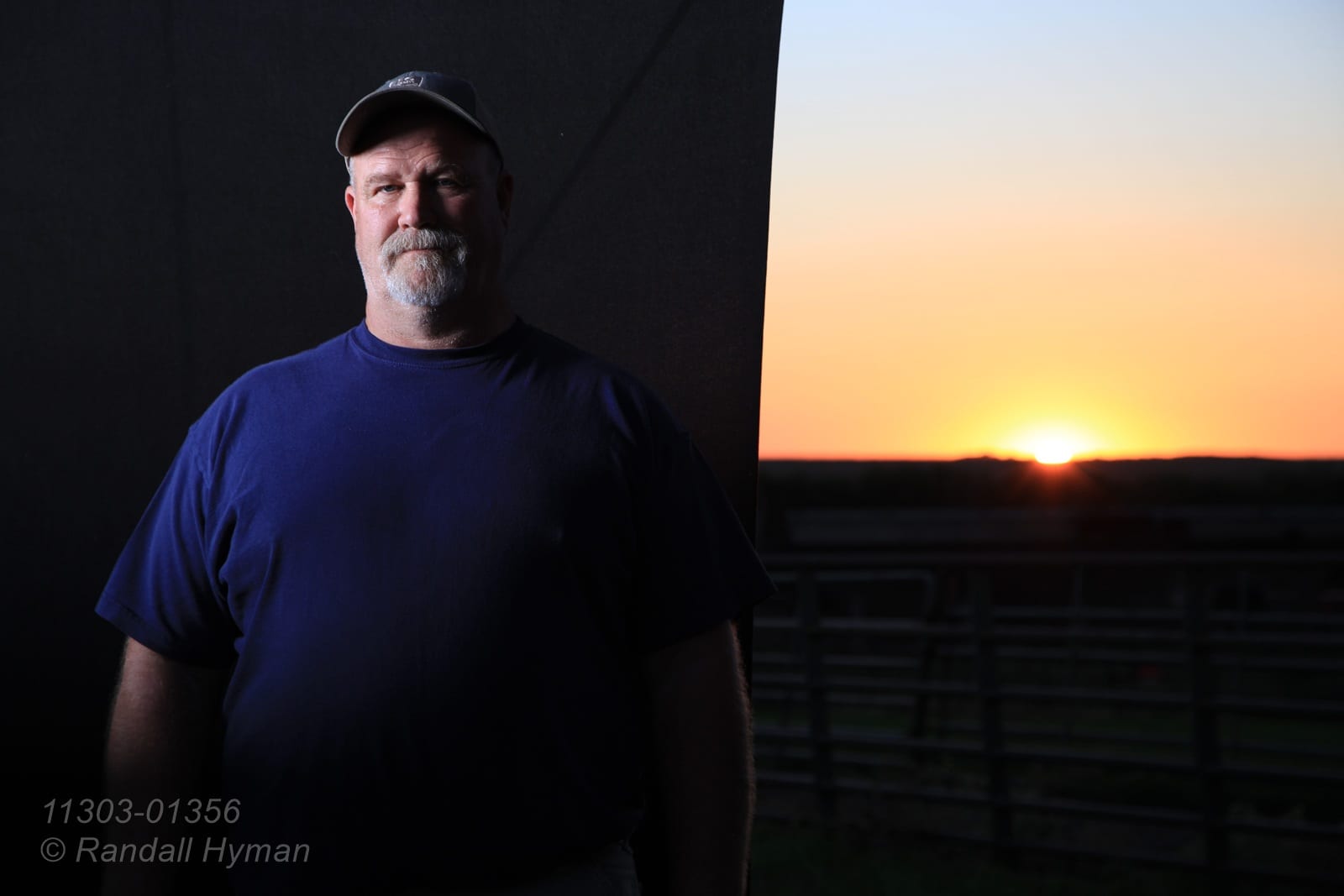
Brad asks if the stars look different where I travel, and I note that the North Star is right over my head when I’m in the Arctic. He’s fascinated, but it’s clear that being right here on his farm suits him fine, with big skies and a bountiful life. After nearly a century of Corzatts on this land, it’s in his blood.



